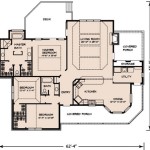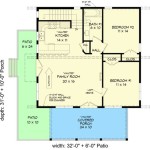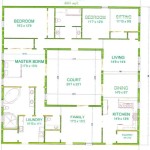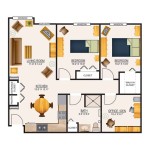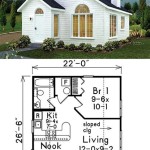Tiny Home On Wheels Plans: Navigating the Free Resources
The burgeoning interest in tiny homes on wheels (THOWs) highlights a desire for minimalist living, financial freedom, and enhanced mobility. Many individuals considering this lifestyle begin by exploring options for sourcing plans. While professional architectural designs and specialized build plans offer precision and compliance with relevant regulations, the pursuit of free tiny home on wheels plans is a common starting point. This article aims to provide clarity on the availability, limitations, and responsible utilization of free THOW plans.
Finding free THOW plans necessitates diligent research and a realistic assessment of the individual's building capabilities. The internet offers a multitude of websites, forums, and blogs claiming to provide free plans. However, the quality and completeness of these offerings vary significantly. It is crucial to understand the inherent risks associated with relying solely on free plans and to supplement them with additional research and potentially professional consultation.
The appeal of free plans is undeniable, particularly for those operating on a tight budget. However, it is important to be aware of the potential pitfalls. Free plans may lack crucial details, such as specific material lists, detailed construction diagrams, or compliance information related to road regulations and safety standards. Utilizing incomplete or inaccurate plans can lead to structural deficiencies, safety hazards, and ultimately, increased costs due to necessary revisions and remediation.
Before embarking on a tiny home build based on free plans, it is strongly advised to comprehensively evaluate the plan's suitability for the intended purpose and the individual's skill level. This includes scrutinizing the structural integrity of the design, the clarity of the instructions, and the availability of necessary permits and inspections in the intended location of use. Failure to address these factors adequately can result in significant setbacks and potential legal issues.
Evaluating the Authenticity and Completeness of Free Plans
The first step in utilizing free THOW plans is to determine their legitimacy and completeness. This involves a thorough examination of several key aspects. A reputable free plan should include a comprehensive bill of materials, specifying the types and quantities of lumber, fasteners, plumbing, and electrical components required. Without this list, it is difficult to accurately estimate the project's cost or ensure that the necessary materials are on hand throughout the build process.
Detailed construction diagrams are another essential component of a reliable plan. These diagrams should illustrate the step-by-step assembly process, including precise measurements and angles. Clear and well-annotated drawings are crucial for minimizing errors and ensuring the structural integrity of the tiny home. If the plans are vague or lack sufficient detail, it may be necessary to seek clarification from the plan's creator or consult with a building professional.
Furthermore, the plans should address critical structural considerations, such as weight distribution, frame construction, and insulation techniques. A well-designed THOW must be able to withstand the stresses of transportation and various weather conditions. The plans should specify the appropriate materials and construction methods to ensure that the tiny home is durable and safe. Look for information regarding load-bearing walls, roof construction, and anchoring systems.
Finally, consider the source of the free plans. Plans from reputable builders or organizations are more likely to be accurate and complete. Look for plans that have been reviewed or tested by other builders. Websites and forums dedicated to tiny homes can provide valuable feedback and insights into the quality of different free plans. Examining user reviews and testimonials can offer valuable perspective on the suitability of a particular plan.
Understanding Regulatory Compliance and Permitting
Building a tiny home on wheels often involves navigating a complex web of regulations and permitting requirements. These regulations vary depending on the location and intended use of the tiny home. It is crucial to understand these regulations before beginning construction, as non-compliance can result in fines, delays, or even the forced removal of the tiny home.
One of the primary regulatory considerations is compliance with road safety standards. THOWs are legally considered trailers and must adhere to regulations related to weight limits, dimensions, lighting, and braking systems. These regulations are typically enforced by state or provincial departments of transportation. It is important to consult with the relevant transportation authorities to ensure that the tiny home meets all applicable requirements.
In addition to road safety standards, building codes and zoning regulations may also apply, especially if the tiny home is intended to be used as a permanent or semi-permanent dwelling. Many municipalities have specific requirements for residential structures, including minimum square footage, sanitation facilities, and electrical systems. It is essential to research local building codes and zoning ordinances to determine whether any permits are required for the construction or placement of the tiny home.
Obtaining the necessary permits can be a time-consuming and challenging process. It may require submitting detailed plans, undergoing inspections, and paying fees. However, obtaining permits is essential for ensuring that the tiny home is legal and safe. Failing to obtain permits can result in significant penalties and may also affect the home's insurability and resale value. Because free plans may lack the detailed engineering and specifications required for permitting, they may need to be supplemented with additional documentation.
Supplementing Free Plans with Professional Consultation and Education
Even with carefully selected and evaluated free plans, it is often beneficial to supplement them with professional consultation and further education. Consulting with a structural engineer, architect, or experienced builder can provide valuable insights and help identify potential problems or areas for improvement. These professionals can review the plans, assess the structural integrity of the design, and offer guidance on construction methods and materials.
A structural engineer can perform calculations to ensure that the tiny home's frame and supporting structures are strong enough to withstand the stresses of transportation and environmental factors. An architect can provide advice on design optimization, space planning, and energy efficiency. An experienced builder can offer practical tips and techniques for constructing the tiny home, based on their own experiences and knowledge of local building practices.
In addition to professional consultation, consider investing in further education on relevant topics, such as building codes, construction techniques, and electrical and plumbing systems. There are many online courses, workshops, and seminars that can provide valuable knowledge and skills. Learning about these topics can help ensure that the tiny home is built to a high standard of quality and safety.
Moreover, joining online communities and forums dedicated to tiny homes can be a valuable source of information and support. These communities provide a platform for sharing experiences, asking questions, and receiving feedback from other builders. Learning from the experiences of others can help avoid common mistakes and improve the overall quality of the build. Sharing progress and challenges with the community can also foster a sense of camaraderie and motivation throughout the building process.
While free tiny home plans can provide a starting point, they should be viewed as a foundation rather than a complete solution. The importance of thorough research, careful planning, and potentially professional guidance cannot be overstated. These steps are essential for ensuring that the tiny home is safe, durable, and compliant with all applicable regulations.
The journey of building a tiny home on wheels is a significant undertaking that requires dedication, patience, and a willingness to learn. By approaching free plans with a critical eye and supplementing them with additional resources, individuals can increase their chances of successfully creating a tiny home that meets their needs and aspirations.
Ultimately, the decision to utilize free plans is a personal one, influenced by factors such as budget, building experience, and desired level of customization. However, it is crucial to make an informed decision, based on a realistic assessment of the risks and benefits involved. Prioritizing safety, quality, and regulatory compliance should always be paramount.

Elegant Tiny House Plans On Wheels Free 4 Conclusion Trailer Floor

Tiny House Floor Plans 32 Home On Wheels Design

Free Tumbleweed Diy Tiny House Plans Houses

Tiny House Floor Plans 32 Long Home On Wheels Design

Tiny House Plans The Project

Design A Tiny House On Wheels Tips And Tools For Diyers

27 Adorable Free Tiny House Floor Plans Craft Mart

Tiny House Floor Plans 32 Home On Wheels Design

27 Adorable Free Tiny House Floor Plans

27 Adorable Free Tiny House Floor Plans Craft Mart


